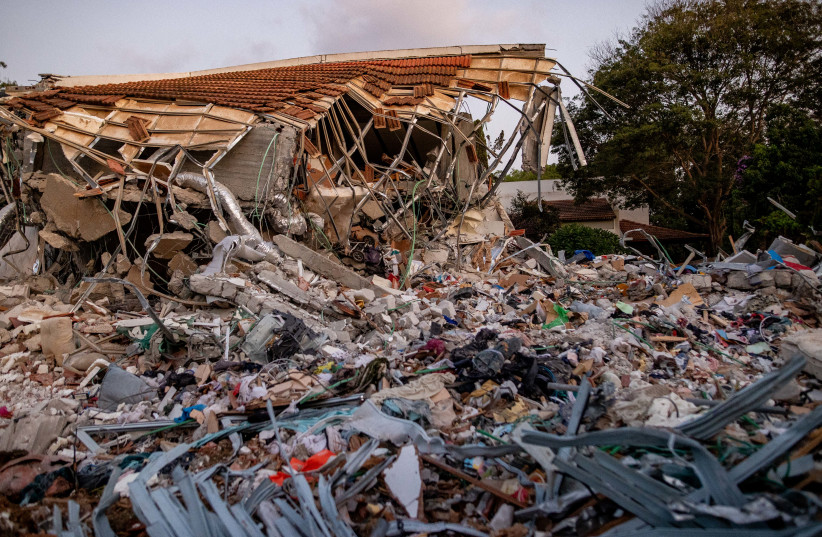Israeli teen ran ‘operations room’ as Hamas came to kill her family
Over one desperate and blood-soaked Saturday, Hadar Bachar was transformed from an ordinary 13-year-old girl into the coordinator of her family’s fight to survive a Hamas onslaught.
Like other residents of Israeli border villages overrun by the armed Palestinian infiltrators on Oct. 7, the Bachars barricaded themselves in a “safe room” built to weather rocket barrages from Gaza. Hamas worked to turn it into a death trap.
First the gunmen fired through the door, seriously wounding both Hadar’s father, Avida, and her 15-year-old brother, Carmel. Eventually, the terrorists would rupture the reinforced window with explosives and shoot her mother, Dana, through the gap.
It was down to Hadar to stanch wounds while trying to summon help or advice. In the chaos and cacophany, she used her mobile phone and those of her parents to call emergency services that would not reach her home in Kibbutz Beeri for hours yet.
“It needs to be understood: A 13-year-old girl is running an operations room, with three phones at the same time,” Avida recalled with grim pride from a hospital where he was recovering after the amputation of one of his wounded legs.

From the village’s WhatsApp groups, the Bachars learned in real-time that Hamas was on a house-to-house killing spree – and that such a fate awaited them if they emerged from hiding.
For Dana, it was already too late. Only her daughter was able to attend to her, as instructed over the phone by medics.
“They tell me to strip her down. I did so and I checked, but I couldn’t find an entrance or exit wound from the bullet. They told me to check her breathing. She was not breathing,” Hadar said, speaking quietly in a Reuters interview with her father.
“My dad said, ‘Leave her be.'”
How Hamas attacked civilians
Neighbors’ frenzied text warnings alerted the Bachars to what would come next. The terrorist intruders used fire to try to smoke them out. That began with a wardrobe being jammed against the other side of their safe room door and set alight.
“They also used tires. They brought tires from vehicles, spare tires, anything they could. They torched the tires to create a thicker smoke – black, that you can’t breathe – to make people escape outside through the windows,” Hadar said.
“And then they would die during their escape.”
Hadar and her wounded brother were still pressed up against the door, to keep it from being battered down, when the flames came.
“I tell Carmel that we need to move away, and then, 10 minutes later, when I get burns on my legs and Carmel gets burns on his hands, I tell him, ‘We need to move’,” she said.
“So we moved closer to the mattresses and we stayed there. In the meantime I hide under a suitcase and I speak to anyone who can help.”
Help would eventually arrive, but not before more than 100 residents of Beeri – 10% of the village population – had been killed. Among them was Carmel, who succumbed to his wound.
Avida says he will recover and rebuild – as will his daughter.
“Without a doubt, you think to yourself, ‘What does a 13-year-old need this for? What are you exposing her to?’ But we were in survival mode and she was, in all honesty, a superstar,” her father said. “There’s no one like her. She kept her cool. It was almost frightening.”





Comments are closed.